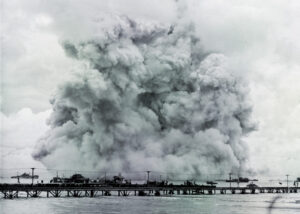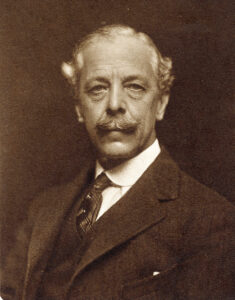Life in Mr. Lincoln’s Navy, by Dennis J. Ringle, Naval Institute Press, Annapolis, Md., 1999, $33.
This book is the first in-depth study of all aspects of a common sailor’s life in the Union Navy during the Civil War. It includes information about recruiting, clothing, training, daily shipboard routine, diet, wages, entertainment, health and combat experiences. It also gives a glimpse into the new world of steam engineering. The men assigned to the engineering division proved critical to the success of the wartime ironclad monitors that constituted the heart of the North’s naval striking force.
Author Dennis Ringle also provides a fresh look at the social history of the 19th century, illustrating the enormous contributions that the common sailors, 20 percent of whom were black, made toward the development of the U.S. Navy as it completed the transition from sail and wood to steam and iron. Ringle focuses on the lives of the enlisted men assigned to Navy vessels operating on the Western rivers, enforcing the blockade of 3,500 miles of Atlantic and Gulf coast and tracking and destroying Confederate commerce raiders worldwide.
The author draws upon numerous published and unpublished letters, diaries, journals, laws, regulations and ships’ logs. These many documents provide ships’ daily history–valuable information about the life of the 118,000 men who served in the U.S. Navy during the Civil War. Manning the fleet always presented problems. When the small nucleus of trained naval personnel and men trained in commercial vessels proved insufficient, the Navy set up a rigorous recruiting and training program, offering the added opportunity to avoid the draft and to share in prize money when Confederate vessels were captured or sunk.
Service in the Navy was undeniably dangerous. A total of 1,804 men were killed in action, while another 2,550 died of disease. But Army casualty figures were proportionally much higher. And the Navy provided better food. A sophisticated fleet sailed up and down the Atlantic coast with fresh food and eagerly anticipated mail for the men. The vessels returned to the North with sick and wounded sailors and return mail. The U.S. naval hospitals were also far superior to the Army’s. Steam vessels always had a sufficient supply of clean water to use and to share with sailing vessels. Malaria and yellow fever, little understood at the time, were the primary causes of fatal diseases on ships blockading the Florida and Gulf coasts.
The vessels patrolling the Western rivers were subject to sniper fire, mines (called torpedoes) and cannon fire, with little room to maneuver while under fire. The blockading vessels, when they made an assault on the shore, met the same kind of opposition. When Admiral David Farragut gave his famous command, “Damn the torpedoes, full speed ahead,” one of his vessels did strike a torpedo and sank, taking more than 80 percent of her crew down with her–the highest unit casualty loss in the war. When the Civil War finally ended, the common sailor knew that he had helped save the Union, had secured the freedom of all and had laid a solid foundation for the future world-class Navy.
Dennis J. Ringle served a full career as an engineering officer in the U.S. Navy, from which he retired in 1997. He writes with authority, knowledge and a deep respect for the common sailor, particularly those who pioneered the engineering field when steam engines and iron ships were new.
Calvin G. Bass




